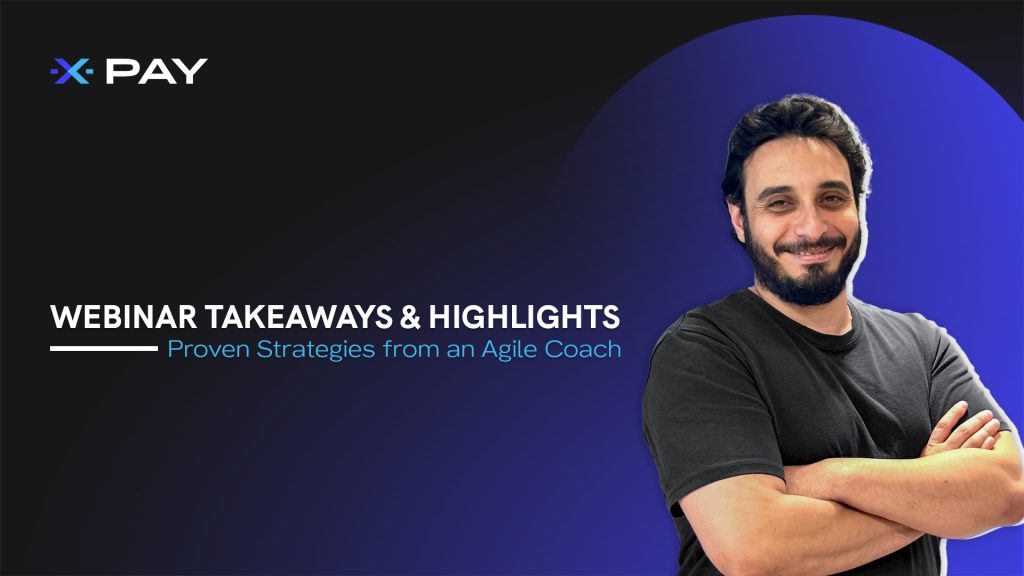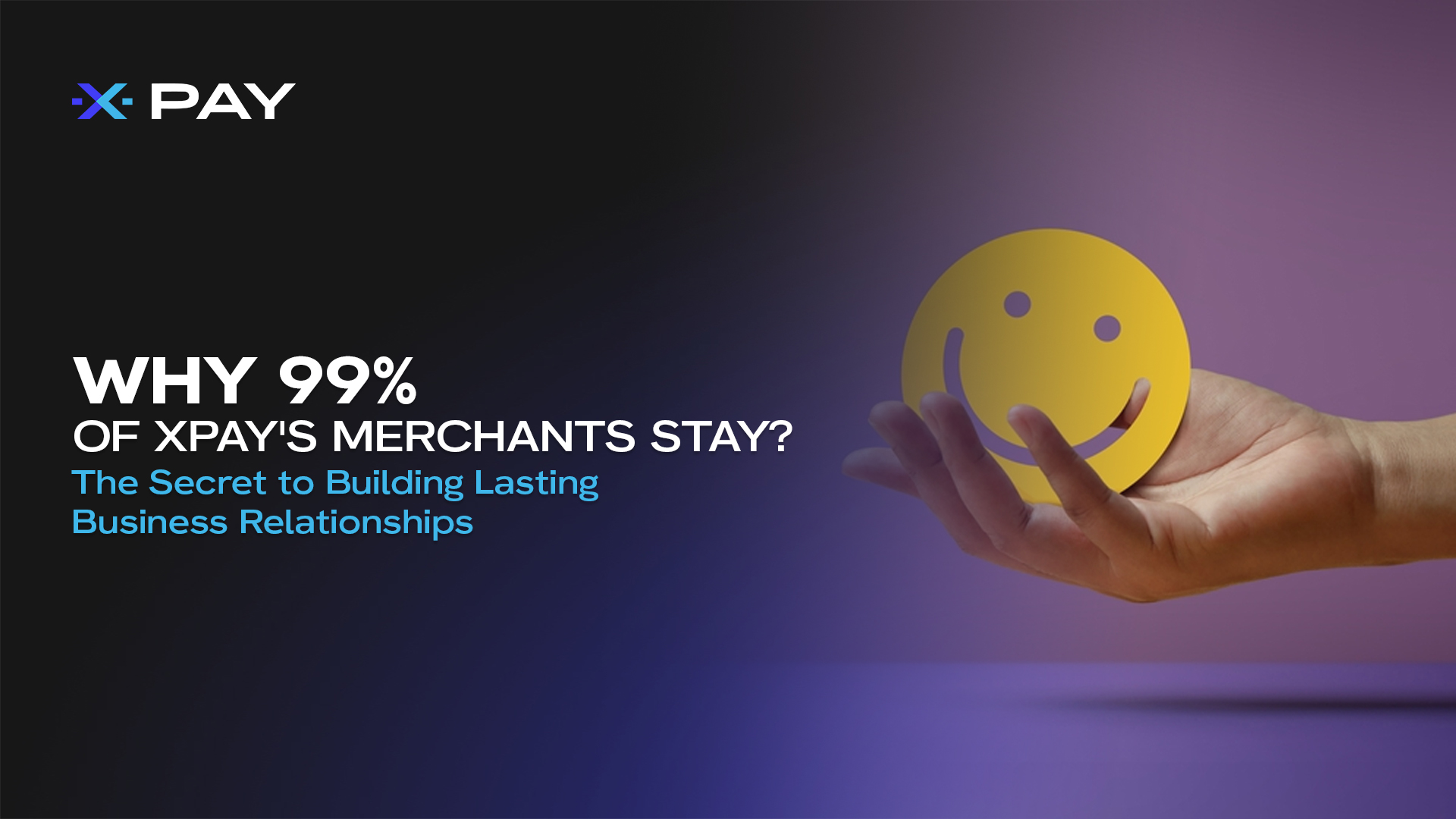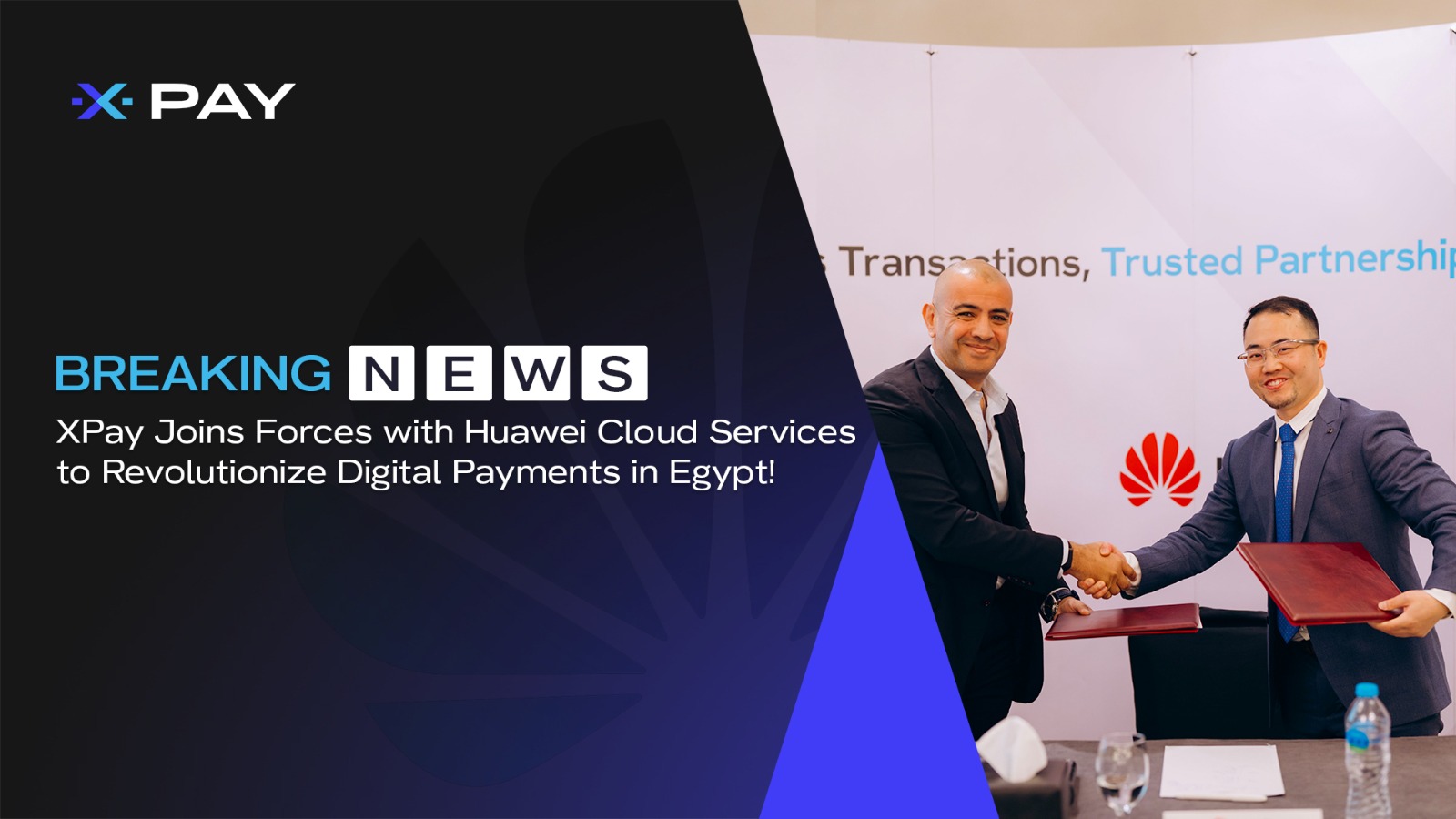Webinar Takeaways and Highlights
In the fast-paced world of fintech, delivering exceptional customer experiences is key to standing out. Our recent webinar, titled Mastering Customer Success Through Technology: Proven Strategies from an Agile Coach, explored how businesses can harness technology and agile practices to improve customer success, drive engagement, and stay ahead of market trends. This blog summarizes the core ideas presented, offering a roadmap for businesses aiming to create customer-first solutions in the digital age.
I. Introduction
Customer success is no longer just a department—it’s a business strategy. As tech companies face increasing competition, placing customers at the heart of operations has become essential. By leveraging technology and agility, businesses can create experiences that not only meet but exceed customer expectations, ensuring customer loyalty and long-term growth.
II. Who is Raed Elganainy?
Raed Elganainy, Engineering Director at XPay, brings a wealth of experience in leading teams through the challenges of building customer-centric technology solutions in fintech. With a background in agile methodologies, Raed has been instrumental in shaping the way organizations like XPay prioritize customer success. His expertise spans from technical engineering to fostering team collaboration, ensuring that customer feedback is seamlessly integrated into the product development cycle. Raed's approach is rooted in aligning both technology and business strategies to deliver not just functional products, but exceptional experiences that drive customer satisfaction.
III. Key Topics Covered
The webinar provided a comprehensive framework for mastering customer success through technology, emphasizing that technology alone will not help startups achieve their goals. Technology must work hand in hand with other critical elements to form a cohesive strategy. Raed highlighted the interconnected nature of these components, starting with requirements gathering (the customer-centric approach), progressing through Lean UX, then to technology, followed by process, and finally team culture and lean practices.
The webinar broke down this framework into several key areas:
-
Prioritize solving customer pain points over internal brainstorming or partner-driven ideas.
-
Engage directly with customers to gather feedback and define requirements, ensuring alignment with real-world needs.
-
Adopt Lean UX practices to design solutions that solve actual customer challenges:
-
Make assumptions about problems.
-
Prototype solutions quickly.
-
Test and iterate with real customers.
-
Align technology decisions with business goals such as scalability, stability, and profitability.
-
Avoid overengineering; choose tools appropriate for the current scale and needs of your business.
-
Establish a steady flow of customer insights via surveys, interviews, and observations.
-
Prioritize feature development based on demand frequency and customer value.
-
Use agile methodologies like Scrum and Kanban to focus on delivering incremental value.
-
Combine agile with robust technical practices, such as testing automation, to maintain quality.
-
Build trust and openness within teams to encourage innovation and collaboration.
-
Create an environment where team members feel safe sharing ideas, mistakes, and solutions.
- Continuous Improvement: Establishing a cycle of innovation, efficiency, and waste elimination.
- Continuously identify inefficiencies and implement small, incremental improvements that lead to significant gains over time.
Raed’s insights made it clear that a siloed approach to customer success—whether focused solely on technology or processes—won’t suffice. Instead, startups must integrate these elements holistically to create solutions that deliver value consistently and effectively.
IV. The Power of Customer-Centric Technology
Tools such as AI-driven analytics, customer feedback platforms, and real-time data monitoring allow businesses to:
-
Offer personalized services that reflect a deeper understanding of individual preferences.
-
Resolve issues faster than ever before, leveraging automation and data insights to provide real-time solutions.
While these technologies are powerful, they must be applied strategically. Simply adopting trending or "hyped" tools without aligning them with business goals can lead to wasted resources and misaligned efforts. It's crucial to ensure that technology choices directly support objectives like customer satisfaction, scalability, and profitability.
An essential part of this process involves gathering customer pain points directly from users. These pain points should be prioritized based on the frequency of requests and then transformed into well-defined features. Without careful prioritization, businesses risk creating a large, inconsistent application that lacks cohesion and focus. By addressing the most pressing customer needs, organizations can ensure their solutions remain effective, streamlined, and valuable.
When used wisely and in alignment with customer insights, AI-powered tools can play a significant role in creating personalized and seamless experiences. By leveraging these technologies strategically, companies can build trust, foster loyalty, and establish long-term relationships with their customers.
V. Proven Strategies for Customer Success
Adopting a customer-first mindset involves more than just technology—it requires actionable strategies that prioritize customer satisfaction. These approaches have proven effective at XPay and can serve as a model for businesses aiming to enhance their customer success efforts:
-
Personalized Communication: Using customer data to create tailored messages that resonate with individuals. Personalization goes beyond addressing customers by name; it involves understanding their needs and delivering relevant, meaningful communication that addresses their unique challenges.
-
Proactive Support: Solving problems before they arise by using tools like real-time monitoring to identify and address potential issues early. The goal is to provide a service so seamless that customers rarely need to reach out for support.
-
Feedback Loops: Actively listening to customers and integrating their feedback into product updates. Regular customer input ensures that every iteration improves the product or service, aligning with real needs and expectations.
Additionally, the customer success team plays a crucial role in maintaining transparency and setting proper expectations. Clear and honest communication about timelines and deliverables helps build trust and credibility. Conveying hard messages effectively, such as delays or challenges, ensures customers feel respected and valued. This proactive and transparent approach is essential to fostering long-term relationships and reinforcing customer loyalty.
By adopting these strategies, businesses can elevate customer satisfaction, reduce churn, and improve retention while positioning themselves as trusted partners in their customers' success.
VI. Agility as a Competitive Advantage
Raed believes agility is a crucial factor in maintaining a competitive advantage, especially in the fast-moving fintech industry. He explained that agility isn’t just about speed—it’s about being adaptable. “Agile practices enable us to build solutions that evolve with customer expectations, helping us stay ahead of the curve,” he noted.
Agile methodologies help organizations adapt quickly to changing customer needs and market dynamics. By focusing on collaboration, flexibility, and iterative improvements, fintech companies can:
-
Launch updates faster, responding to customer feedback and technological advances with speed.
-
Address customer pain points in real time, ensuring continuous improvements.
-
Iterate on products and services, keeping them relevant and impactful.
Raed shared an example from XPay’s approach to product releases: “We don’t wait for a ‘perfect’ solution; instead, we deliver incremental improvements. This enables us to provide continuous value and remain responsive to our customers' evolving needs.”
VII. Key Insights and Takeaways from the Webinar
-
Customer-Centric Approach: Understanding Needs and Gathering Requirements
Raed emphasized that understanding customer pain points is crucial to developing successful solutions. He highlighted the importance of active customer involvement:
"When we do requirements, we start with a customer-centric approach, focusing more on the customer pains and needs rather than our own ideas."
"Instead of having closed-room meetings discussing ideas with partners, go to your customers, gather feedback, and create a prototype to test with them."
-
Lean Experimentation: Validating Ideas with Data
Raed advocates for testing ideas in cheap, iterative cycles. He advised against overinvesting in prototypes before validating customer needs:
"You need to make it cheap. Don’t invest too much in building the prototype and technology before you’re sure it’s what your customers need."
-
Setting KPIs for Success
Clear KPIs are essential for measuring success objectively. As Raed noted:
"We tend to fall in love with our ideas. By setting KPIs beforehand, we can provide an objective way to judge whether the experiment was a success or not."
-
Technology Serving Business Needs
Raed stressed that technology should be a tool to meet business needs, not the other way around:
"Technology is a tool. If it doesn't serve the business, then we have a problem. The business direction comes first, followed by the requirements, and then we choose the technology."
"Choosing technology because it's trendy or new might get you somewhere, but if it doesn’t align with the business needs, it will be a wasted investment."
-
Avoiding Overcomplication in Architecture
Raed warned against overengineering systems that aren’t necessary for the scale of the business:
"Don’t overcomplicate the architecture if the user base is small. If the client has only 1,000 users, you don’t need all the performance testing for large-scale use."
"You don’t have to go for the latest tech like microservices unless you really need it. It's important to understand the scale before investing in complex solutions."
-
Continuous Deployment and Process
Agile processes like Scrum help teams stay focused on delivering value, not just completing tasks:
"We set the process to deliver value quickly and with quality. We don’t do it because we love processes; we do it to ship products efficiently."
"Scrum helps you manage the requirements in a timeboxed sprint, but the key is delivering value, not just checking off tasks."
-
Team Dynamics and Culture
Team dynamics are just as important as technology and processes. Raed emphasized transparency and collaboration:
"The right team dynamics are crucial. If the team isn’t working well together, the process won’t be as effective."
"We focus on transparency and safety, so team members can openly share mistakes, suggest solutions, and continuously improve."
VIII. Conclusion
Raed’s webinar concluded with a clear call to action for businesses to adopt an iterative mindset and always strive for continuous improvement. By adopting a customer-centric approach, leveraging the right technologies, focusing on agile processes, and fostering a collaborative culture, businesses can consistently meet customer needs and deliver value.
We’re excited to continue sharing these valuable insights and look forward to more webinars in the future. Stay tuned and follow us on social media to stay up-to-date on upcoming sessions and industry trends.






